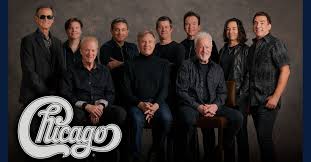What Sets Soft Rock Apart (And How It Compares to Yacht Rock)
At its core, soft rock is rock’s mellow sibling. It prioritizes melody, vocals, and accessible arrangements rather than distortion, aggression or wild technical displays. As one guide puts it: it emphasizes “pop hooks, pristine studio production, and pleasing sonic aesthetics.” MasterClass
Here are a few trait markers of soft rock:
- Gentle to mid-tempo rhythms, plenty of acoustic guitar or light electric guitar, keyboards and smooth vocals. AllMusic+1
- Lyrics focused on relationships, introspection, love, loss — everyday emotional stuff rather than rebellious or political themes. jampack.com+1
- Production that’s polished — the songs sound great on radio, in the car, in the living room. Big on melody, clean on the edges. MasterClass+1
Now, how does it differ from yacht rock? The two overlap a lot — in fact yacht rock grows out of soft rock. But yacht rock adds a certain aesthetic: the high-end production associated with the Los Angeles studio scene from the late ’70s/early ’80s, often with jazz or R&B undercurrents, even a breezy “yacht” vibe (boats, leisure, sun, sailing). Wikipedia+1
So:
- Soft rock = “rock with the hard edges taken off.” AllMusic+1
- Yacht rock = a more specific slice of that: super polished, LA-studio refined, often built for the soundtrack of cruising and leisure.
In other words: all yacht rock could be considered a form of soft rock (depending on how you define it), but not all soft rock is yacht rock.
Notable Artists and Songs by Decade
Let’s explore some of the artists and songs you might include in a soft-rock playlist or deep dive — grouped by decade so you can see how the genre evolves.
1970s
The 1970s were the commercial heyday of soft rock. These songs dominated radio and became part of our collective soundtrack.
- Bread – “Make It With You” (1970) – Gentle vocals, acoustic guitar, simple production: quintessential soft rock.
- Carole King – “It’s Too Late” (1971) – A singer-songwriter turned soft rock staple.
- Eagles – “Hotel California” (1976) / “Best of My Love” (1975) – While they flirted with harder rock, these ballads lean soft-rock.
- James Taylor – “Fire and Rain” (1970) – Folk rock meets soft rock with melody and emotion.
- Elton John – “Daniel” (1973) – Piano-driven, melodic, classic.
1980s
In the 1980s, soft rock adapted. Synths popped in, production got slicker, and it edged closer to adult contemporary.
- Phil Collins – “Against All Odds (Take a Look at Me Now)” (1984) – Emotional, polished, radio-friendly.
- Lionel Richie – “Hello” (1984) – Smooth vocals, big production, love theme.
- Chicago – “Hard to Say I’m Sorry” (1982) – The horn-based rockers dialing back and leaning soft.
- Toto – “Africa” (1982) – While it flirts with adventurous production, it still sits nicely in the soft rock spectrum.
- Bryan Adams – “Heaven” (1985) – Big chorus, melodic, emotional — soft rock for stadiums.
1990s
By the 1990s, soft rock wasn’t always the forefront of radio (grunge, hip-hop and alternative were booming) but it still had major hits and stayed relevant.
- Michael Bolton – “How Am I Supposed to Live Without You” (1990) – Power ballad meets soft rock.
- Extreme – “More Than Words” (1991) – Acoustic, harmonic, very soft rock in feel.
- Genesis – “Hold on My Heart” (1992) – Rock veterans embracing mellow melody.
- Seal – “Kiss from a Rose” (1994) – While more R&B/pop-leaning, it shares the lush romantic vibe.
- Sheryl Crow – “If It Makes You Happy” (1996) – Slightly edgier, but still within melody-first territory.
Why Soft Rock Still Resonates (Especially for Us Late-Listeners)
For someone like me rediscovering, soft rock is a goldmine. Why? Because it hits a sweet spot between comfort and craft.
- The songs are familiar but often underrated — you might know the chorus but now hear the nuance.
- They age well. Because the production isn’t overly tied to a narrow trend, many of these tracks still sound great today.
- They tie into life moments. Soft rock often accompanied road trips, summer nights, drive-ins, first loves and reflections. Revisiting it is like opening a time-capsule of your own memory.
- The overlap with other genres means you might slide into soft rock naturally from pop, country or adult‐contemporary, which makes it accessible.
In fact, music guides mention how soft rock morphs into adult contemporary in the 1980s — showing how it evolved rather than disappeared. thehistoryofrockandroll.net+1
Final Thoughts: Soft Rock on Your Rediscovery List
If you’re building a playlist for Late To The Music, or simply want to revisit music you may have heard but not listenedto, soft rock is a great starting point. You can pick a decade, pick some anchor artists (say Elton John or Carole King for the ’70s; Phil Collins or Lionel Richie for the ’80s; Michael Bolton or Extreme for the ’90s) and listen with fresh ears. Ask yourself: How does this song make me feel today? What stands out? What did I miss?
And remember: soft rock isn’t soft in the sense of weak — it’s smooth, emotional, and melodic. It’s rock music that grew up a little. As we revisit these records, we might find that we grew up, too—and they’ve been waiting for us to come back.
